
There’s something incredibly satisfying about building a mini world full of life. That’s exactly what it feels like when I create a succulent terrarium—a tiny oasis, right on my windowsill. Succulents are the ideal plants for this kind of setup. They’re compact, slow-growing, and require very little fuss. Plus, there’s such an amazing variety out there, from spiky and dramatic to soft and rosette-shaped.
Before we dive in, just a quick note: Succulents don’t do well in high humidity, so it’s best to use an open terrarium rather than a closed one. This allows for air circulation and prevents moisture from building up. Now, let’s explore some of the best succulents that thrive in these mini landscapes.
1. Echeveria
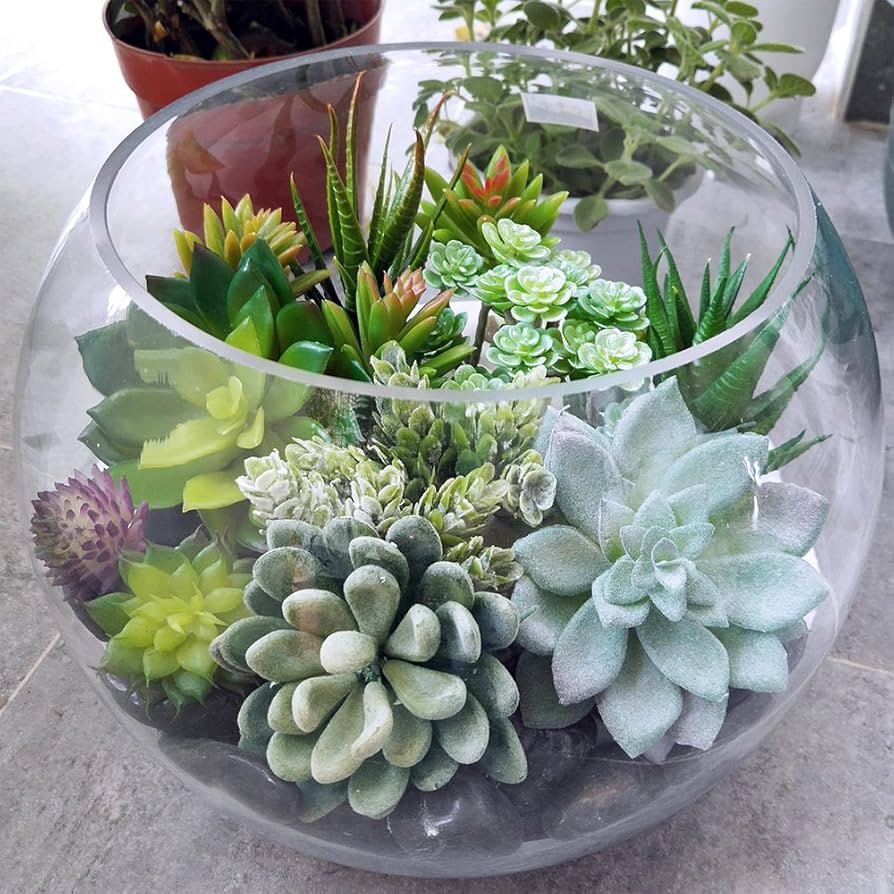
Echeveria is probably the first plant that comes to mind when most people think of succulents—and for good reason. These beautiful rosette-shaped succulents come in a wide range of colors, from soft greens to dusty pinks and even purples. I love placing one right in the center of my terrarium as a focal point.
They stay fairly compact and respond well to indirect light. You don’t need to water them often—I usually wait until the soil is completely dry. Plus, their symmetrical shape adds such a pleasing aesthetic to any arrangement.
If you’re looking for a variety that really pulls a terrarium design together, Echeveria is your best friend. You can even group a few together in a larger tank for a super eye-catching display.
2. Haworthia
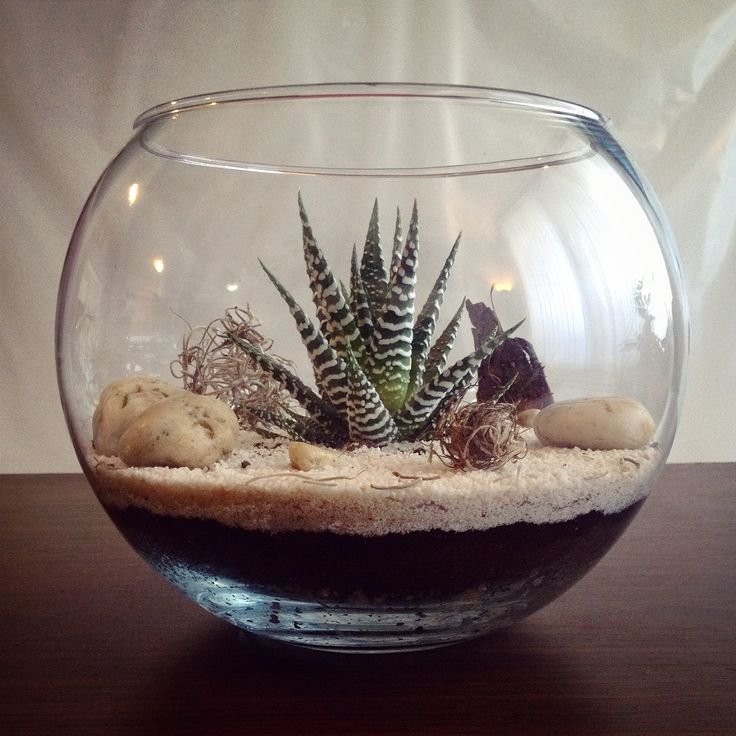
Haworthia is one of my favorite go-to plants when I want to add something low-maintenance with a little flair. Their spiky leaves with zebra-like stripes give them a cool, graphic look that pops in a terrarium. They also stay small, so you won’t have to worry about them outgrowing their space.
One of the things I love most about Haworthia is that it tolerates lower light better than many other succulents. That makes it perfect for terrariums kept on shelves or in less sunny rooms.
They don’t require much watering and can go weeks without attention. If you’re just starting out with terrariums or succulents in general, Haworthia is a stress-free option.
3. Jade Plant (Crassula ovata)
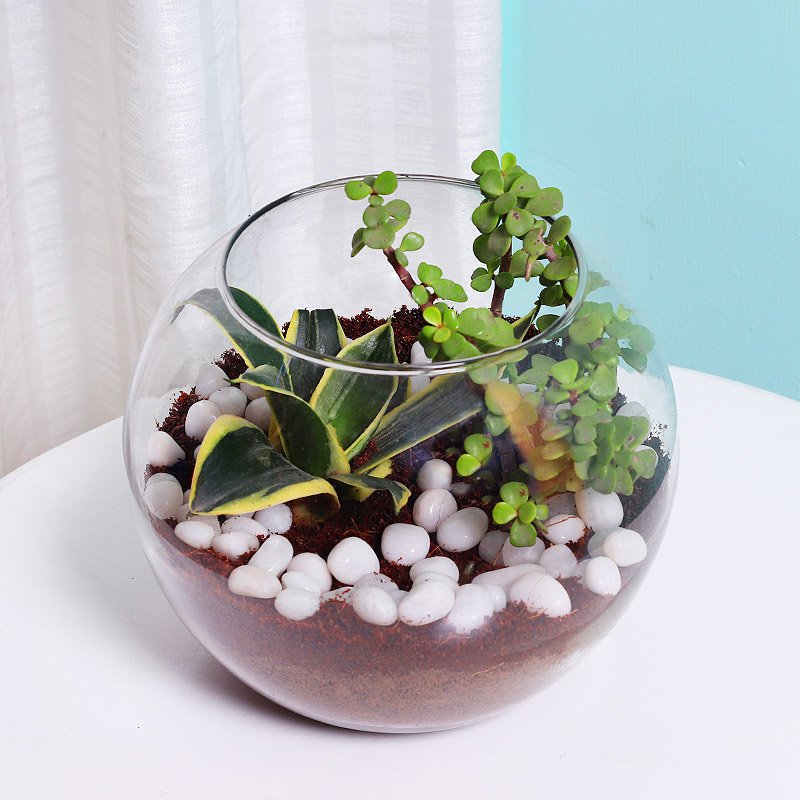
The Jade Plant, also known as the money plant, is a classic that brings a touch of good fortune and charm. Its thick, oval-shaped leaves have a glossy, vibrant green look that contrasts beautifully with sand or pebbles in a terrarium.
What I really like about Jade Plants is how easy they are to shape and control. You can trim them back to maintain a tidy size, or let them get a bit wild if that’s your style.
They love light, so place them near a window, and make sure not to overwater. I water mine about once every two weeks, and it just keeps thriving.
4. String of Pearls (Senecio rowleyanus)
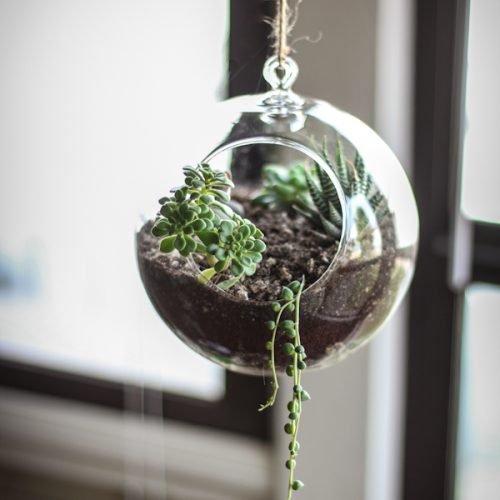
String of Pearls is such a show-stealer! Its delicate, bead-like leaves trail beautifully over the edges of a terrarium or glass bowl, creating a cascading effect that softens the whole look.
I love using this plant in taller or hanging terrariums. It gives a vertical dimension that most succulents don’t offer. Just be careful not to overwater—its roots are quite sensitive.
It needs bright, indirect sunlight to stay plump and healthy. If you get it right, though, it’ll reward you with a truly unique appearance that catches everyone’s eye.
5. Panda Plant (Kalanchoe tomentosa)

Panda Plants are just so cute. Their fuzzy, velvety leaves have little brown spots on the tips, which give them a soft and whimsical appearance. They feel like the plush toy of the succulent world.
I use Panda Plants in terrariums where I want to add a cozy, textured look. Their silvery tone works really well when paired with darker greens or deep purple succulents.
They prefer dry conditions and plenty of light. Make sure the soil drains well, and avoid letting water sit on the leaves, as this can cause rot.
6. Zebra Plant (Haworthiopsis attenuata)

The Zebra Plant is another striped beauty, similar to Haworthia but with a slightly chunkier build. Its bold white bands give it a graphic flair that stands out beautifully in a simple terrarium design.
It stays small, rarely growing taller than a few inches, and it’s super drought-resistant. I often tuck these into the corners of my arrangements where they fill out space without taking over.
This is a great choice if you want something eye-catching but still easy to care for. It handles neglect better than most houseplants, which makes it ideal for busy folks.
7. Lithops (Living Stones)
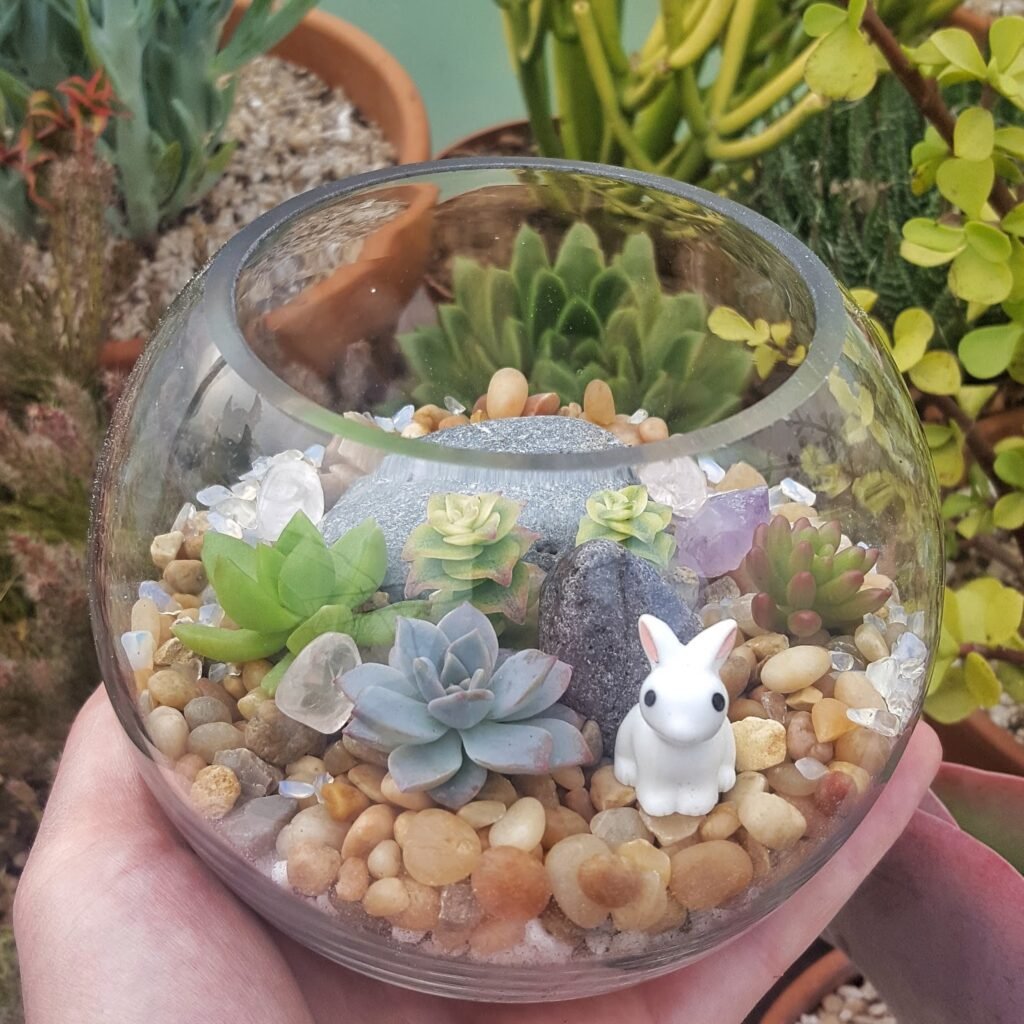
Lithops are just fascinating. They look like little stones, which helps them blend into a rocky terrarium background. People often don’t even realize they’re alive until they bloom.
They’re extremely compact and grow slowly, so they’re ideal for small spaces or shallow containers. I like to place them among actual pebbles for a fun, camouflage effect.
Lithops need very little water—too much, and they’ll split or rot. I water mine sparingly, about once a month, and they’ve done beautifully.
8. Burro’s Tail (Sedum morganianum)
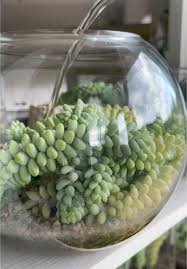
Burro’s Tail has this soft, cascading look that feels both dramatic and gentle. Its thick, teardrop-shaped leaves grow along trailing stems, making it perfect for glass jars or tanks with a bit of height.
Be warned—the leaves are super delicate and tend to fall off at the slightest bump. Handle with care when planting or moving your terrarium around.
Despite that, it’s a lovely plant that doesn’t ask for much. Bright light, minimal watering, and it keeps growing longer and fuller with time.
9. Aloe Vera (Mini Varieties)
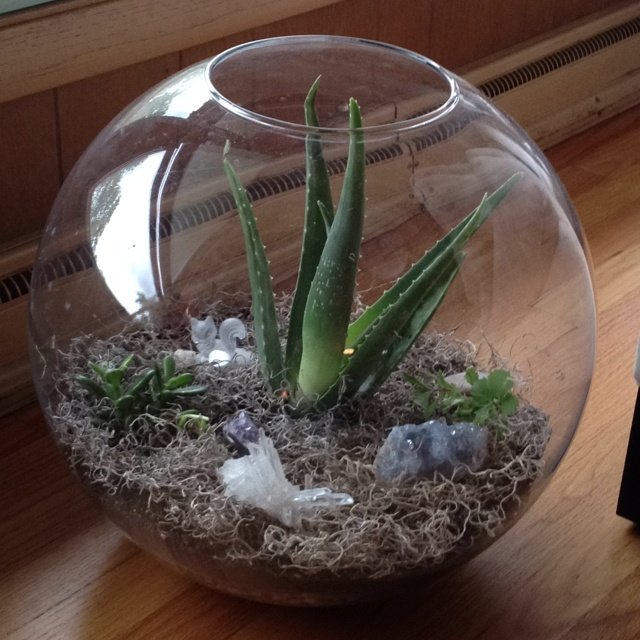
Aloe Vera isn’t just a healing plant—it’s also a striking visual addition to any terrarium. I like using miniature varieties since regular Aloe can get quite large. The spiky leaves add a bold architectural touch.
They thrive with lots of light, so keep your terrarium in a sunny spot. They’re also great at drying out completely between waterings, which means less chance of root rot.
Besides being beautiful, they also come with the bonus of having soothing gel inside the leaves. Though in a terrarium, I mostly enjoy them for their sculptural vibe.
10. Sempervivum (Hens and Chicks)

Sempervivum is one of those plants that seems to multiply by magic. The main rosette (the “hen”) produces smaller offshoots (the “chicks”) that spread out over time.
I love using these in larger terrariums where I want a fuller, clustered look. They come in different shades of green, red, and even purple, which adds depth to your arrangement.
They like full sun and dry soil. I use a gritty cactus mix with them and avoid overwatering. It’s such a satisfying plant to watch grow and expand.
11. Ghost Plant (Graptopetalum paraguayense)
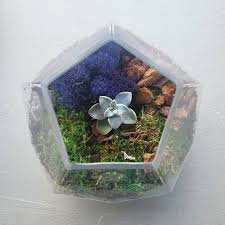
Ghost Plant has this pale, almost pearlescent color that gives it a ghostly, elegant charm. It starts out as a tight rosette but can develop long, trailing stems as it grows.
This one’s great for adding movement and softness to your terrarium. I often use it around the edges, where it can gently spill out of the container.
It loves bright light and doesn’t need frequent watering. Its color actually becomes more intense when it gets enough sun.
12. Tiger Jaw (Faucaria tigrina)
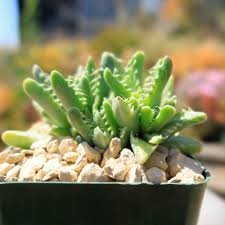
Tiger Jaw is a tiny, fierce-looking plant that adds bold texture to your terrarium. Its thick leaves have tooth-like edges that resemble a little jaw—hence the name.
Despite its fearsome appearance, it’s easy to care for. I give mine full sun and let the soil dry out between waterings. It’s not fussy at all.
Tiger Jaw adds a sculptural edge to any succulent mix. I find it looks especially cool when paired with soft, round succulents for contrast.
13. Donkey Ear Plant (Kalanchoe gastonis-bonnieri)
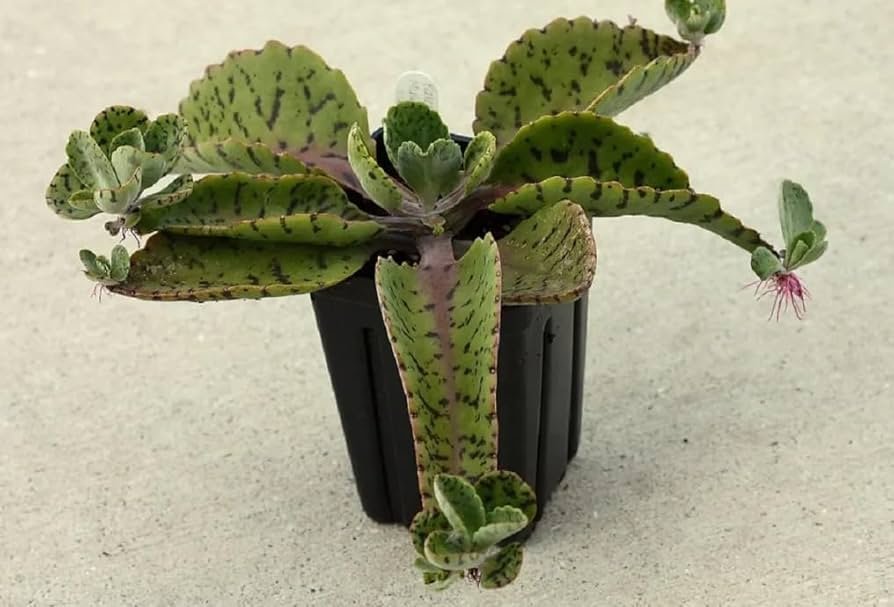
This succulent is all about the drama. With large, speckled leaves shaped like donkey ears, it makes a bold statement in bigger terrariums.
It needs a bit more space, so I use it in wider, open containers. The leaves often get a reddish tint in bright light, which adds even more interest.
It’s a fun plant that grows fast and adds height and pattern to your setup. If you want to make your terrarium stand out, this one’s a top pick.
Tips for Choosing and Caring for Succulents in Terrariums
When putting together a succulent terrarium, always go for an open container. Succulents need airflow and dry conditions to thrive. I usually start with a layer of small stones, followed by activated charcoal, and then a gritty soil mix.
Stick with plants that have similar light and water needs. Place your terrarium in a bright spot, and don’t overwater. Less is more when it comes to succulents.
Terrariums are about balance—structure, color, texture. Play with different shapes and sizes to create something that feels like a tiny, peaceful desert right in your home.
Final Thoughts
Creating a succulent terrarium is more than just a DIY project—it’s a way to bring a piece of calm into your everyday life. These plants are tough, beautiful, and surprisingly easy to work with. Whether you’re a seasoned plant parent or just starting out, you’ll find so much joy in watching your mini oasis grow.
Try mixing a few of these succulents together and see what works for you. And if you do build your own, I’d love to see it—share your creation and let’s inspire each other!

